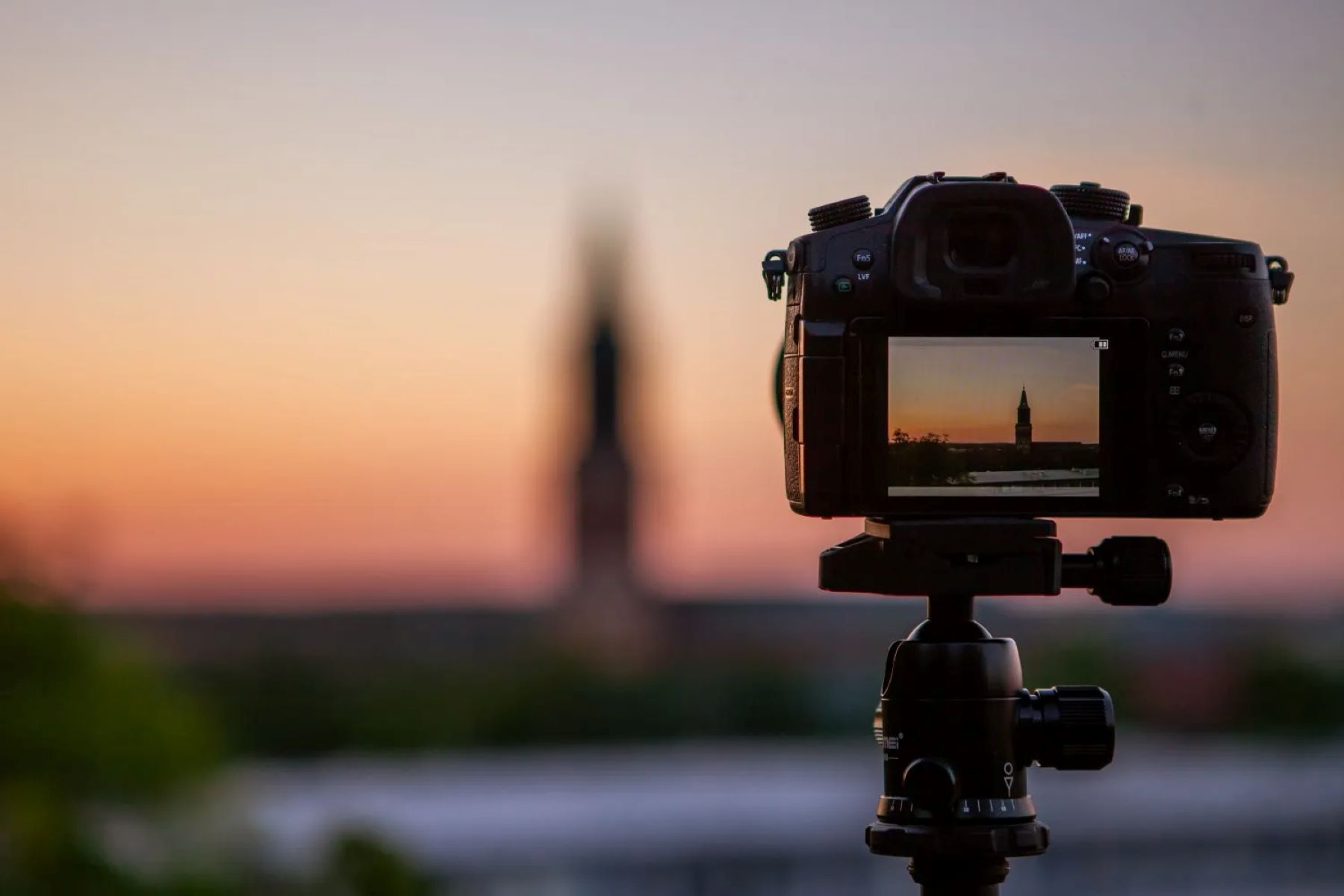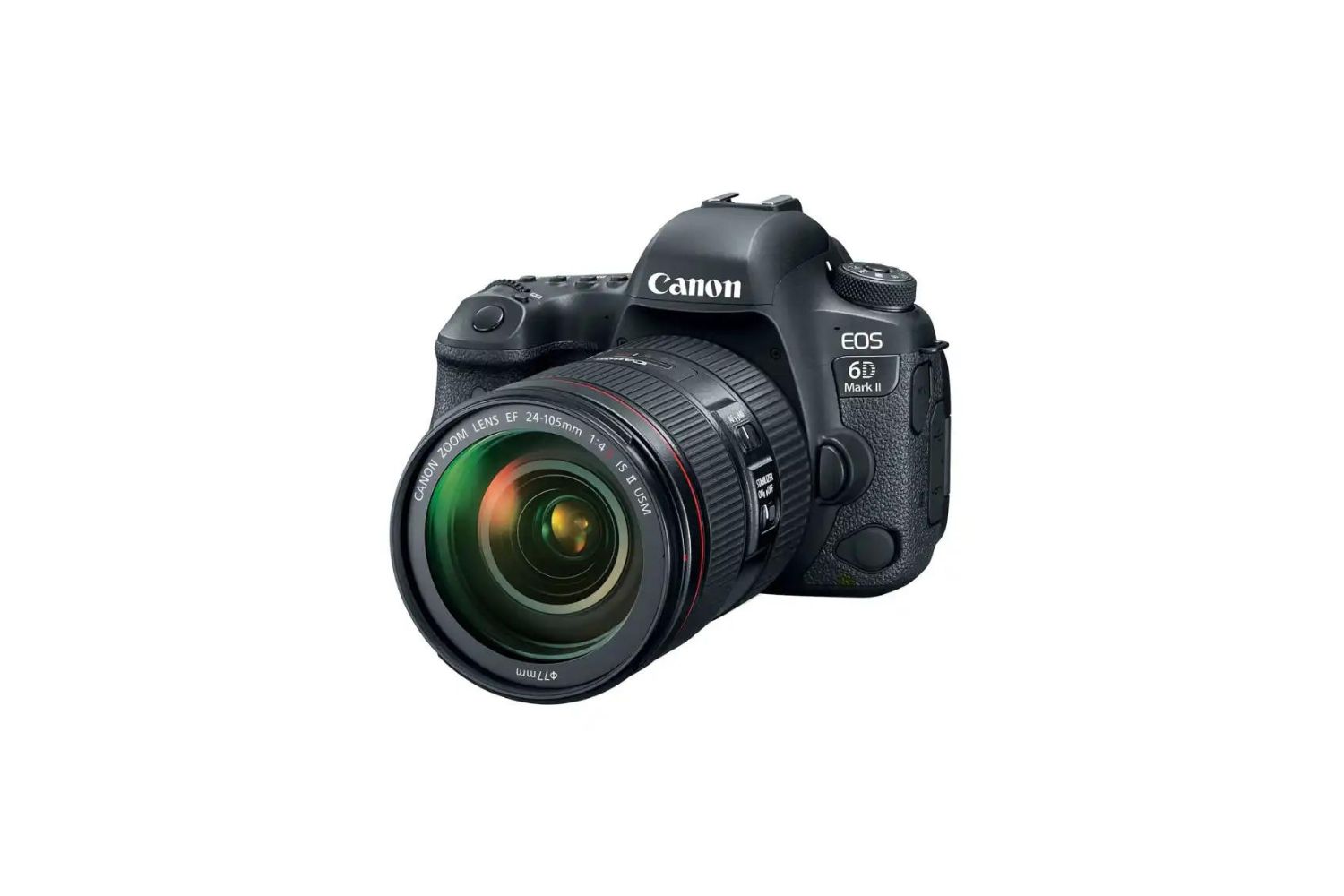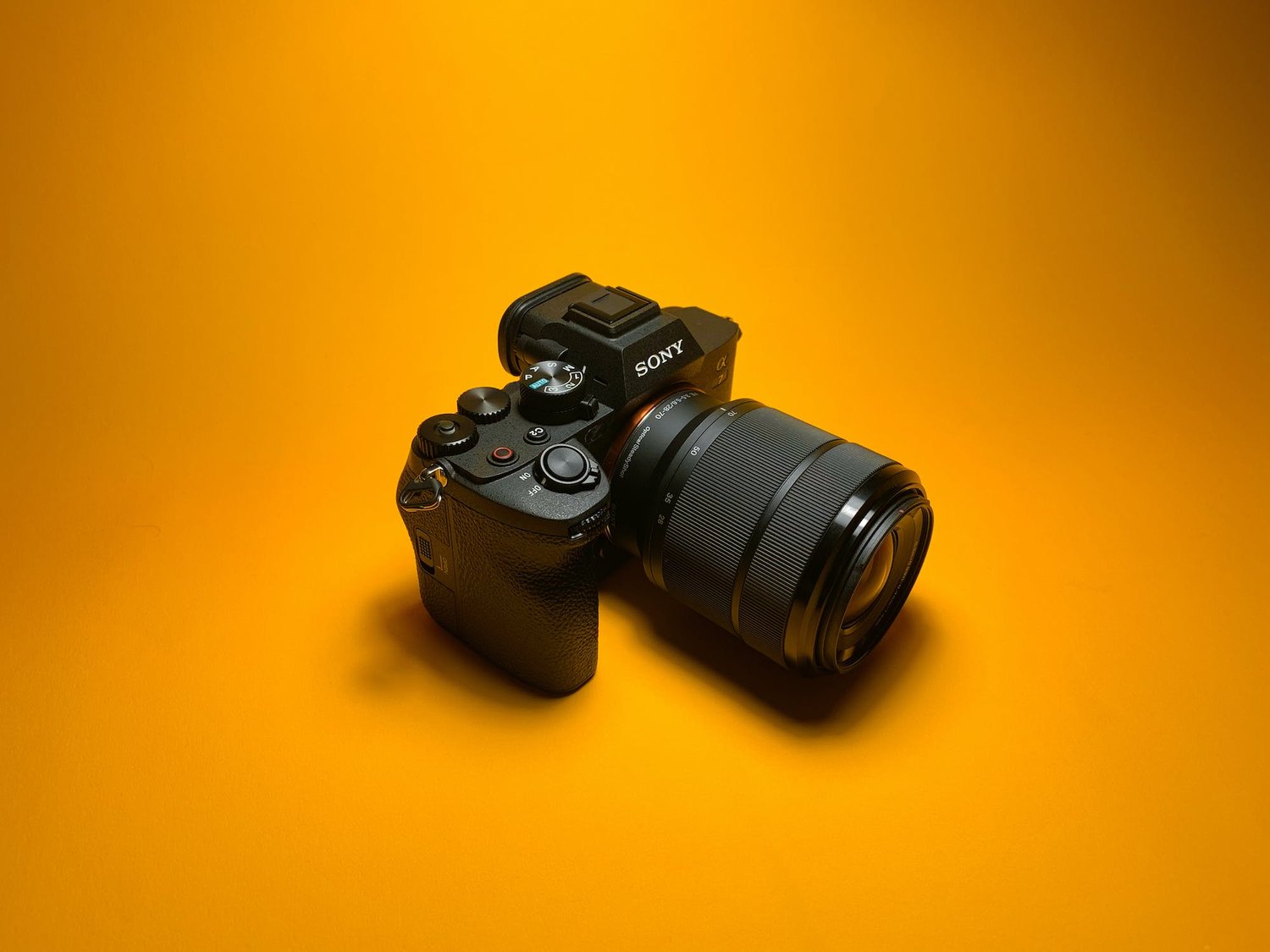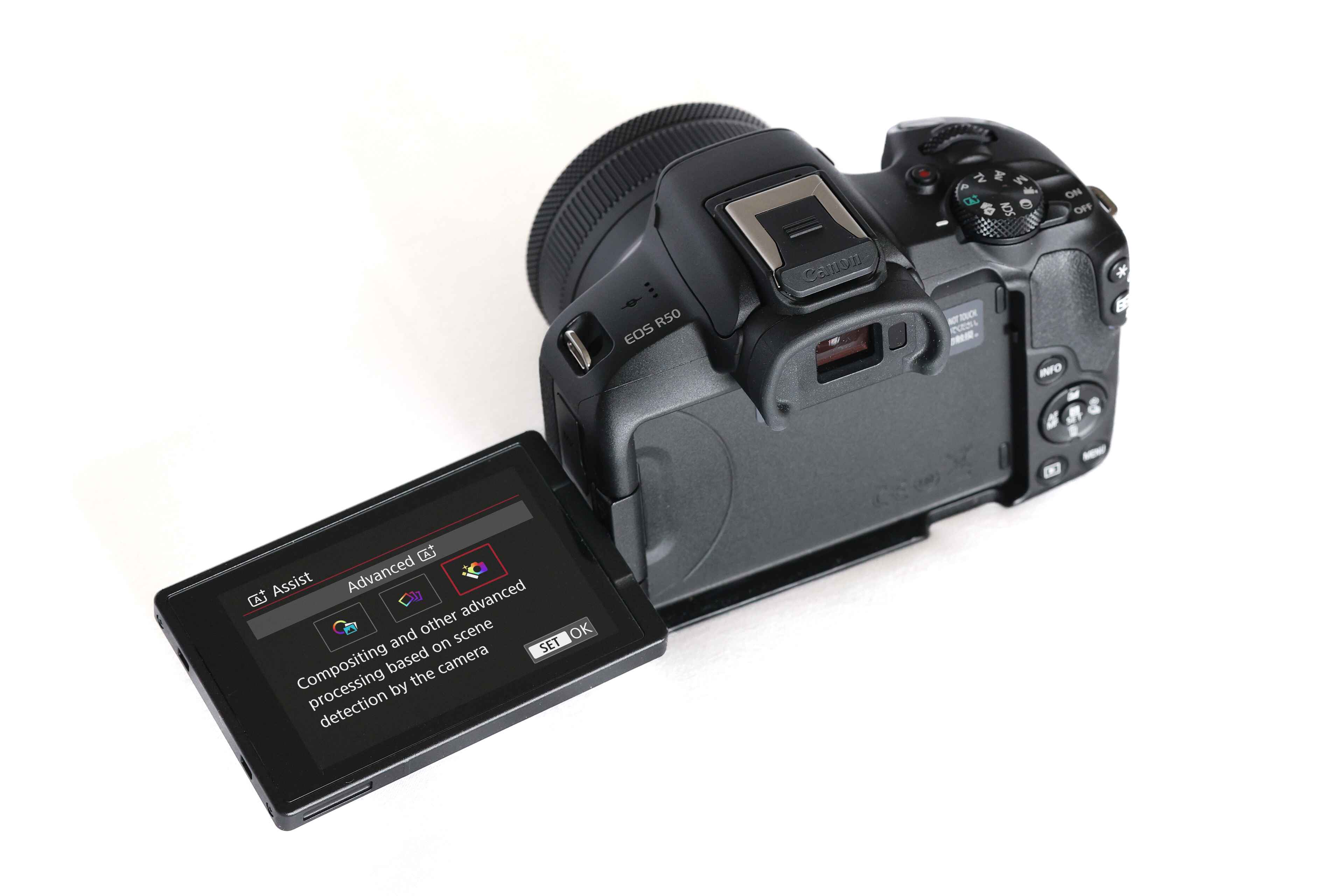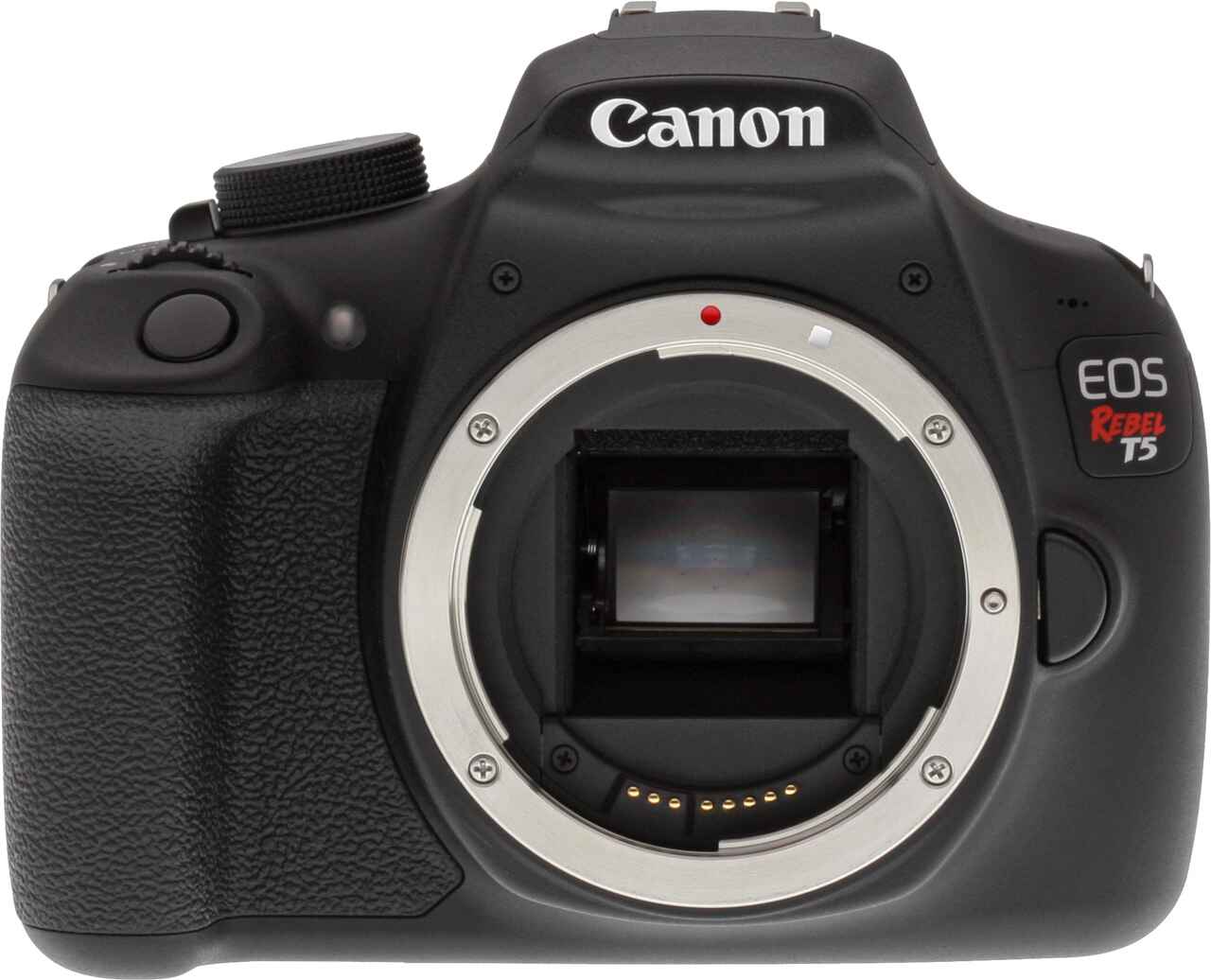The Fascinating World of DSLR Cameras
Welcome to the captivating world of DSLR (Digital Single-Lens Reflex) cameras, where cutting-edge technology meets the art of photography. These remarkable devices have revolutionized the way we capture and immortalize moments, offering unparalleled control and precision. Whether you’re an aspiring photographer or a seasoned professional, understanding the inner workings of a DSLR camera is essential for mastering the art of photography.
In this comprehensive guide, we will delve into the intricate mechanisms that power DSLR cameras, unraveling the magic behind their exceptional performance. From the lens to the image sensor, each component plays a crucial role in producing stunning photographs with unparalleled clarity and detail. By gaining insight into how these components work in harmony, you’ll develop a deeper appreciation for the craftsmanship and engineering that goes into creating these extraordinary devices.
Join us on a captivating journey as we explore the inner workings of DSLR cameras, demystifying the technology that empowers photographers to unleash their creativity and capture the world through a lens of unparalleled clarity and vision.
The Basics of a DSLR Camera
At the core of every DSLR camera lies a sophisticated system designed to capture stunning images with remarkable precision. Understanding the fundamental components of a DSLR camera is essential for harnessing its full potential and achieving exceptional results.
One of the defining features of a DSLR camera is its utilization of a digital imaging sensor to capture light and create images. This sensor, typically made of silicon, is composed of millions of photosites that convert light into electrical signals, ultimately producing the digital photographs we cherish.
Additionally, a DSLR camera incorporates a mirror and prism mechanism, allowing photographers to preview the scene through an optical viewfinder with unparalleled clarity and accuracy. This optical system provides a real-time view of the subject, enabling precise composition and focus adjustments.
Furthermore, DSLR cameras are equipped with a versatile interchangeable lens system, empowering photographers to adapt to various shooting scenarios and achieve diverse visual effects. The lens plays a pivotal role in determining the composition, depth of field, and overall aesthetic of the captured images.
With a solid grasp of the fundamental elements that constitute a DSLR camera, photographers can embark on a journey of creativity and expression, leveraging the advanced capabilities of these remarkable devices to bring their artistic visions to life.
The Lens
The lens is an integral component of a DSLR camera, serving as the window through which the world is captured and immortalized. Comprised of meticulously engineered glass elements, the lens plays a pivotal role in shaping the visual narrative of a photograph. With a diverse array of lenses available, photographers can seamlessly adapt to various shooting scenarios, from expansive landscapes to intimate portraits, and unleash their creative potential.
One of the defining characteristics of a lens is its focal length, which determines the angle of view and magnification of the captured image. From wide-angle lenses that encompass vast scenes to telephoto lenses that bring distant subjects into sharp focus, the focal length of a lens profoundly influences the visual storytelling capabilities of a photographer.
Moreover, the aperture of a lens, represented by the f-stop value, regulates the amount of light entering the camera, thereby influencing the exposure and depth of field in a photograph. By adjusting the aperture, photographers can control the background blur, or bokeh, and achieve striking visual effects that enhance the overall impact of their images.
Additionally, modern lenses are equipped with advanced optical coatings that minimize lens flare, ghosting, and aberrations, ensuring unparalleled image quality and clarity. These coatings mitigate the impact of extraneous light and elevate the overall sharpness and contrast of the captured photographs.
Furthermore, the construction of a lens, including the arrangement of lens elements and the incorporation of specialized glass, significantly influences its optical performance and character. Whether it’s a prime lens renowned for its exceptional sharpness and low-light capabilities or a versatile zoom lens offering unparalleled flexibility, the construction of the lens is a testament to the precision and craftsmanship that defines the art of photography.
By harnessing the power of high-quality lenses, photographers can transcend the confines of visual expression, capturing moments with unparalleled clarity, depth, and emotional resonance. The lens stands as a testament to the artistry and innovation that propels the world of photography forward, empowering photographers to craft visual narratives that resonate with authenticity and creativity.
The Shutter
Within the heart of a DSLR camera resides a critical component known as the shutter, a mechanism that regulates the duration of light exposure, enabling photographers to freeze moments in time with unparalleled precision. Comprising a complex assembly of blades and springs, the shutter plays a pivotal role in controlling the duration of light reaching the image sensor, thereby capturing the essence of a scene with remarkable clarity and detail.
When the shutter release button is pressed, the shutter swiftly opens, allowing light to pass through the lens and onto the image sensor. The duration for which the shutter remains open, known as the shutter speed, profoundly influences the visual outcome of the photograph. Whether it’s freezing fast-paced action with a high shutter speed or capturing the graceful motion blur of a waterfall with a slow shutter speed, this fundamental parameter empowers photographers to shape the narrative of their images with unparalleled control.
Furthermore, the shutter mechanism of a DSLR camera is designed to withstand rigorous usage, offering exceptional durability and reliability. With the ability to endure thousands of actuations, the shutter embodies the resilience and precision that define the essence of professional photography, ensuring consistent performance even in demanding shooting conditions.
Moreover, the synchronization of the shutter with the camera’s autofocus and exposure systems is crucial for achieving optimal results. The seamless coordination between these elements ensures that each photograph is captured with impeccable timing and exposure, culminating in images that encapsulate the essence of the photographer’s vision.
Additionally, the shutter mechanism contributes to the reduction of camera shake and vibration, facilitating the creation of tack-sharp images even in challenging shooting scenarios. By minimizing the impact of internal camera movements, the shutter enhances the overall stability and clarity of the captured photographs, empowering photographers to unleash their creativity without compromise.
As a testament to precision engineering and technological innovation, the shutter stands as an indispensable component of a DSLR camera, embodying the artistry and craftsmanship that underpin the captivating world of photography.
The Image Sensor
At the heart of every DSLR camera lies a remarkable innovation known as the image sensor, a sophisticated electronic component that serves as the digital canvas for capturing light and transforming it into vibrant, high-resolution photographs. Comprised of millions of individual photosites, the image sensor plays a pivotal role in translating the visual nuances of a scene into digital imagery, offering an unparalleled level of detail and fidelity.
One of the defining characteristics of an image sensor is its resolution, which determines the level of detail and clarity in the captured photographs. With advancements in sensor technology, modern DSLR cameras boast high-resolution sensors capable of rendering intricate textures and subtle tonal gradations with exceptional precision, empowering photographers to convey the richness of their subjects with unparalleled fidelity.
Furthermore, the size of the image sensor profoundly influences the camera’s performance in various shooting conditions, particularly in low-light environments. Larger sensors, such as full-frame sensors, exhibit superior light-gathering capabilities, resulting in reduced image noise and enhanced dynamic range, thereby elevating the overall image quality and tonal reproduction.
Moreover, the image sensor’s sensitivity to light, commonly referred to as ISO, enables photographers to adapt to diverse lighting scenarios with remarkable flexibility. By adjusting the ISO setting, photographers can effectively control the sensor’s responsiveness to light, empowering them to capture compelling images in challenging lighting conditions without compromising image quality.
Additionally, the image sensor’s ability to capture color with exceptional accuracy and fidelity is a testament to the advancements in color reproduction technology. With the capacity to reproduce a wide spectrum of hues and tones, modern image sensors imbue photographs with lifelike color rendition, ensuring that the visual narratives captured through the lens are conveyed with authenticity and vibrancy.
As a cornerstone of digital imaging, the image sensor epitomizes the convergence of art and technology, empowering photographers to immortalize moments with unparalleled clarity, depth, and emotional resonance. Its role as the digital conduit for visual storytelling underscores the transformative power of technology in shaping the art of photography.
The Mirror and Prism
Central to the optical design of a DSLR camera is the ingenious integration of a mirror and prism mechanism, a sophisticated arrangement that facilitates the accurate composition and visualization of the scene through the camera’s optical viewfinder. This pivotal system enables photographers to preview the subject with exceptional clarity and precision, laying the foundation for seamless composition and focus adjustments.
When the shutter release button is half-pressed, the mirror, positioned at a 45-degree angle, swiftly deflects the incoming light from the lens upwards towards the pentaprism or pentamirror. This redirection of light ensures that the photographer’s view through the optical viewfinder accurately reflects the scene, providing real-time feedback on composition, focus, and exposure settings.
Moreover, the pentaprism or pentamirror, positioned atop the camera, serves as a crucial component for redirecting the light path and ensuring that the visual representation in the viewfinder is true to the captured image. By employing precision-crafted reflective surfaces, the prism system preserves the fidelity and accuracy of the scene, empowering photographers to make informed decisions about their composition and focus with unparalleled confidence.
Furthermore, the mirror mechanism of a DSLR camera plays a pivotal role in facilitating the seamless transition between the optical viewfinder and the live view mode. When the shutter release button is fully pressed, the mirror momentarily flips up, allowing light to reach the image sensor directly, thereby enabling the camera to capture the photograph. This swift and precise movement ensures that the image sensor receives an unobstructed view of the scene, culminating in the creation of stunning digital photographs.
Additionally, the mirror and prism mechanism embodies the spirit of innovation and precision engineering, seamlessly integrating optical components to deliver an immersive and accurate viewing experience for photographers. Its role in providing real-time feedback and facilitating precise composition underscores its significance as a cornerstone of the DSLR camera’s optical system.
As a testament to the marriage of optical excellence and technological innovation, the mirror and prism mechanism stands as a defining feature of DSLR cameras, empowering photographers to capture the world with unparalleled clarity and vision.
The Viewfinder
Embedded within the optical architecture of a DSLR camera, the viewfinder serves as a window to the world, offering photographers an immersive and precise means of composing their shots. This critical component provides a real-time optical representation of the scene, allowing photographers to make informed decisions about framing, focus, and exposure with unparalleled accuracy and confidence.
One of the defining attributes of the optical viewfinder is its ability to deliver a lag-free, high-resolution representation of the scene, empowering photographers to anticipate and capture decisive moments with exceptional precision. By offering a direct optical view of the subject through the lens, the viewfinder enables photographers to immerse themselves in the visual narrative, fostering a deeper connection with the art of photography.
Furthermore, the optical viewfinder facilitates seamless composition and framing, empowering photographers to fine-tune their shots with precision and creativity. With clear and unobstructed visibility, photographers can explore diverse perspectives and angles, ensuring that each composition reflects their artistic vision with unparalleled fidelity.
Moreover, the optical viewfinder’s ability to provide critical exposure and focus information in real time is invaluable for photographers seeking to achieve optimal results. Through the integration of exposure indicators, focus points, and framing guides, the viewfinder empowers photographers to make informed decisions about their settings, ensuring that each photograph is captured with meticulous attention to detail.
Additionally, the optical viewfinder’s seamless transition between composition and focus adjustments embodies the essence of responsive and intuitive design, ensuring that photographers can effortlessly refine their shots without interruption. This fluid and dynamic viewing experience enhances the overall creative process, enabling photographers to channel their artistic vision with unparalleled fluidity and precision.
As a cornerstone of the DSLR camera’s optical system, the viewfinder stands as a testament to the artistry and precision that define the world of photography. Its role in providing an immersive and accurate representation of the scene underscores its significance as an indispensable tool for photographers seeking to capture the world with unparalleled clarity and vision.
The Autofocus System
Embedded within the intricate framework of a DSLR camera, the autofocus system stands as a testament to precision engineering and technological innovation, offering photographers an indispensable tool for achieving tack-sharp focus and capturing decisive moments with unparalleled clarity. This sophisticated system harnesses advanced algorithms and precise mechanisms to seamlessly lock onto subjects, ensuring that each photograph is rendered with exceptional sharpness and detail.
One of the defining features of the autofocus system is its ability to rapidly and accurately track subjects in motion, empowering photographers to capture dynamic scenes with unparalleled precision. Whether it’s freezing the fluid motion of a sprinter or capturing the graceful movements of wildlife, the autofocus system enables photographers to maintain focus on the subject, ensuring that each moment is immortalized with unparalleled clarity and impact.
Furthermore, the autofocus system’s integration of advanced focusing modes, such as single-point, zone, and wide-area autofocus, offers photographers a versatile toolkit for adapting to diverse shooting scenarios. By tailoring the autofocus mode to suit the subject’s behavior and the composition’s requirements, photographers can achieve precise and reliable focus, ensuring that each image is captured with meticulous attention to detail.
Moreover, the autofocus system’s incorporation of sophisticated predictive tracking algorithms enables photographers to anticipate and capture the decisive moment with exceptional precision. By analyzing the subject’s trajectory and velocity, the autofocus system ensures that moving subjects remain in sharp focus, empowering photographers to create compelling and dynamic imagery that resonates with authenticity and impact.
Additionally, the autofocus system’s seamless integration with the camera’s exposure and metering systems ensures that each photograph is captured with impeccable timing and precision. This harmonious coordination between critical camera functions culminates in images that encapsulate the essence of the photographer’s vision, ensuring that every moment is immortalized with unparalleled clarity and emotional resonance.
As a cornerstone of the DSLR camera’s performance, the autofocus system embodies the convergence of art and technology, empowering photographers to capture the world with unparalleled precision and vision. Its role in delivering exceptional focus and tracking capabilities underscores its significance as an indispensable tool for photographers seeking to elevate their craft and unleash their creative potential.
The Exposure Control
Within the intricate framework of a DSLR camera, the exposure control system stands as a pivotal mechanism, empowering photographers to manipulate light and shadow to achieve compelling and evocative imagery. This sophisticated system, comprising aperture, shutter speed, and ISO settings, offers photographers unparalleled control over the exposure of their photographs, ensuring that each image is rendered with precision and artistry.
One of the fundamental components of the exposure control system is the aperture, which regulates the amount of light entering the camera through the lens. By adjusting the aperture, photographers can control the depth of field, determining the extent to which the foreground and background are in focus, thereby shaping the visual narrative and emphasizing the subject with exceptional clarity and impact.
Furthermore, the shutter speed, another critical parameter of the exposure control system, dictates the duration for which the camera’s sensor is exposed to light. Whether it’s freezing fast-paced action with a high shutter speed or capturing the graceful motion blur of a waterfall with a slow shutter speed, this fundamental setting empowers photographers to convey the essence of a scene with unparalleled creativity and precision.
Moreover, the ISO setting, which determines the sensor’s sensitivity to light, offers photographers remarkable flexibility in adapting to diverse lighting conditions. By adjusting the ISO, photographers can effectively control the sensor’s responsiveness to light, ensuring that each photograph is captured with optimal exposure and image quality, even in challenging lighting scenarios.
Additionally, the exposure control system’s seamless integration with the camera’s metering and exposure compensation functions ensures that each photograph is rendered with exceptional tonal fidelity and dynamic range. This harmonious coordination between critical exposure parameters culminates in images that encapsulate the essence of the photographer’s vision, ensuring that every moment is immortalized with unparalleled clarity and emotional resonance.
As a cornerstone of the DSLR camera’s creative potential, the exposure control system embodies the convergence of art and technology, empowering photographers to shape light and shadow to craft visual narratives that resonate with authenticity and impact. Its role in delivering exceptional control over exposure settings underscores its significance as an indispensable tool for photographers seeking to elevate their craft and unleash their creative potential.
Exploring the Inner Workings of DSLR Cameras
As we conclude our journey into the captivating world of DSLR cameras, we emerge with a profound appreciation for the intricate mechanisms and advanced technologies that underpin these remarkable devices. From the lens to the exposure control system, each component plays a pivotal role in shaping the visual narrative and empowering photographers to unleash their creative potential with unparalleled precision and artistry.
Through our exploration of the lens, we discovered the transformative power of precision-crafted glass elements in shaping the visual narrative and capturing the essence of a scene with unparalleled clarity and impact. The interplay of focal length, aperture, and optical construction underscores the artistry and innovation that define the world of photography, empowering photographers to craft visual narratives that resonate with authenticity and creativity.
Delving into the intricacies of the shutter, we unraveled the critical role of this mechanism in regulating light exposure and capturing decisive moments with exceptional precision. The seamless coordination between the shutter, autofocus, and exposure systems ensures that each photograph is rendered with impeccable timing and clarity, culminating in imagery that encapsulates the essence of the photographer’s vision.
Our exploration of the image sensor unveiled the transformative power of this electronic component in translating light into vibrant, high-resolution photographs. The sensor’s resolution, size, and sensitivity to light underscore its significance as the digital canvas for visual storytelling, ensuring that each image is captured with unparalleled detail and fidelity.
Furthermore, our journey into the mirror and prism mechanism shed light on the critical role of this optical system in providing photographers with an immersive and accurate view of the scene through the camera’s viewfinder. The seamless integration of the mirror and prism mechanism ensures that photographers can compose and visualize their shots with unparalleled clarity and precision, fostering a deeper connection with the art of photography.
As we explored the autofocus system, we marveled at the precision and responsiveness of this mechanism in tracking subjects and achieving tack-sharp focus. The system’s predictive tracking algorithms and advanced focusing modes empower photographers to capture dynamic scenes with exceptional precision, ensuring that each moment is immortalized with unparalleled clarity and impact.
Finally, our examination of the exposure control system underscored the transformative power of aperture, shutter speed, and ISO settings in shaping light and shadow to achieve compelling and evocative imagery. The seamless integration of these critical parameters ensures that each photograph is rendered with precision and artistry, empowering photographers to craft visual narratives that resonate with authenticity and impact.
As we reflect on our exploration of DSLR cameras, we are inspired by the convergence of art and technology that defines these remarkable devices. The intricate mechanisms and advanced technologies serve as a testament to the artistry and innovation that propel the world of photography forward, empowering photographers to capture the world with unparalleled clarity, vision, and emotion.







